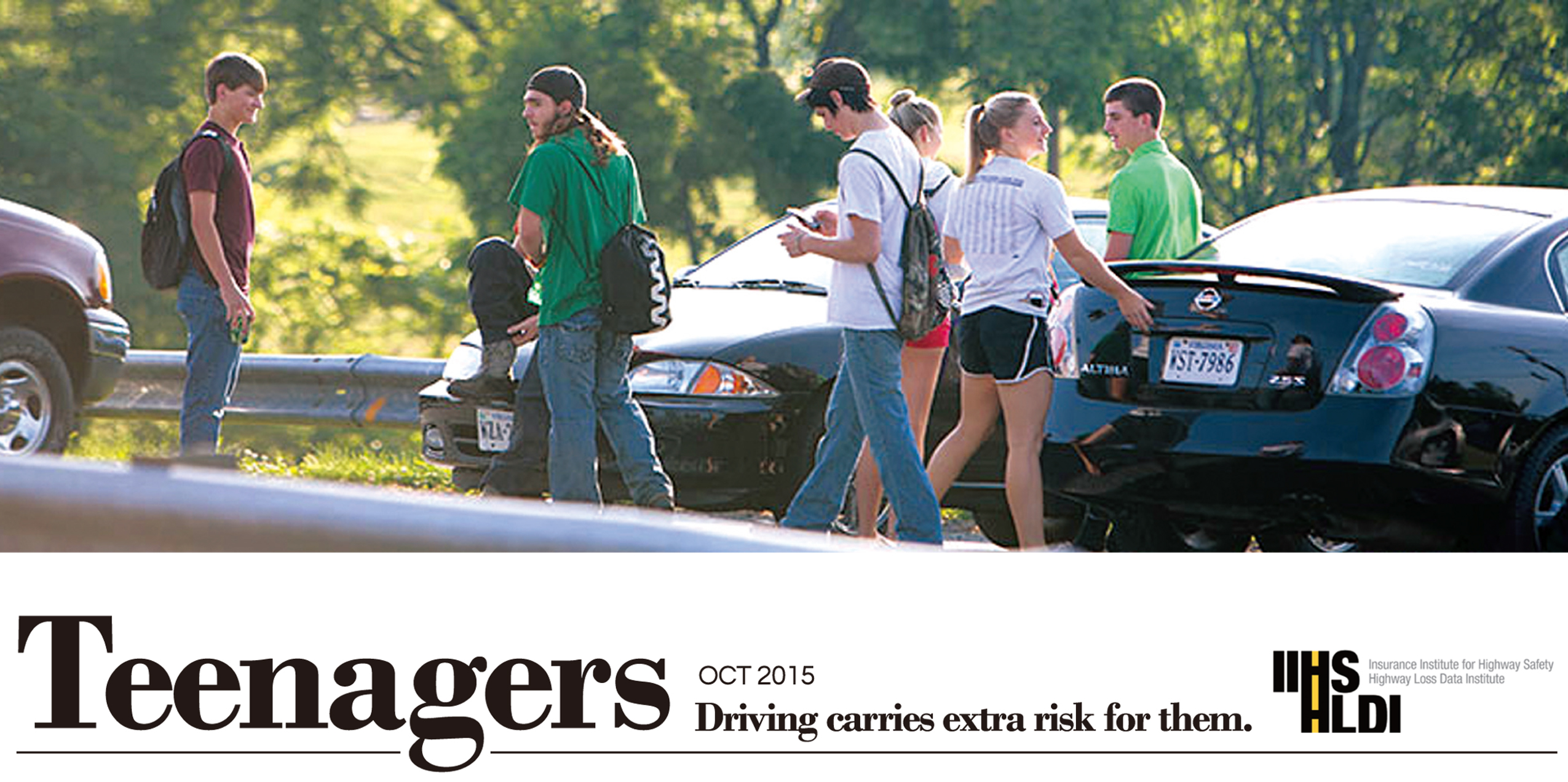
Teen drivers have crash rates 3 times those of drivers 20 and older per mile driven. Immaturity leads to speeding and other risky habits, and inexperience means teen drivers often don't recognize or know how to respond to hazards.
Graduated licensing reduces teens' driving risk. Graduated licensing allows teens to practice driving with supervision before getting their license and restricts driving after they are licensed.
Today all states have at least some elements of graduated licensing. The current best practices are a minimum intermediate license age of 17, a minimum permit age of 16, at least 70 required hours of supervised practice driving, and, during the intermediate stage, a night driving restriction starting at 8 p.m. and a ban on all teen passengers.
Alcohol is a factor in many teen crashes. Although young drivers are less likely than adults to drink and drive, their crash risk is higher when they do. The combination of drinking and driving is made worse by teenagers' relative inexperience both with drinking and with driving.
SAFE AND AFFORDABLE
UPDATED USED VEHICLE RECOMMENDATIONS FOR TEENS
Parents looking for a safe, affordable vehicle for their teen driver have many more options than just a year ago. IIHS has updated its recommendations for used vehicles for teens, and the list has grown by more than 50 percent, even though the price and safety criteria haven't changed.
"Time is on the consumer's side," says Anne McCartt, the Institute's senior vice president for research. "It's easier than ever to find a used vehicle with must-have safety features and decent crash test performance without spending a fortune."
IIHS compiled its first list of recommended used vehicles after finding that the vast majority of parents who bought a vehicle for their teen driver bought it used (see Status Report special issue: vehicles for teens, July 16, 2014). The survey also found that the budgets for teens' vehicles were limited. The mean purchase price for a teen's vehicle was $9,800, while the median was just $5,300.
"The prices for most of the vehicles we recommend for young, novice drivers are still higher than what a lot of people are used to spending," McCartt says. "We would encourage parents to consider paying a little more for safety if they can."
Best choices, good choices
Like last year's recommendations, the new list has two tiers: "best choices," priced under $20,000 with good ratings in the Institute's four oldest crashworthiness tests, and "good choices," priced under $10,000 with less than perfect ratings in some tests. Although there are now some best choices under $10,000, having two tiers gives consumers a wider variety of lower priced options.
Still, there are a few things that parents shouldn't compromise on:
High horsepower should be avoided. The temptation to test the limits of a powerful engine is too hard for many teens to resist. Vehicles that only come with big engines have been left off the lists, but many recommended models have high horsepower versions that should be avoided. The base engines of all the listed vehicles have adequate power for teens.
Bigger, heavier vehicles are safer. Consumers won't find minicars or small cars among the best choices or the good choices. Small SUVs, which weigh about the same as midsize cars, are OK.
Electronic stability control is a must. This technology, mandatory since the 2012 model year, helps a driver maintain control on curves and slippery roads. It's a proven lifesaver, cutting single vehicle fatal crash risk nearly in half. All listed vehicles have the feature standard..
When it comes to crash test ratings, vehicles on the "best choices" list have good ratings in the Institute's long standing moderate overlap front, side, roof strength and head restraint tests.
Vehicles on the "good choices" list have good ratings in the IIHS moderate overlap front test, good or acceptable ratings in the side test and a better than poor rating for head restraints.
If rated by the National Highway Traffic Safety Administration, vehicles on either list must earn 4 or 5 stars overall or 4 or 5 stars in the front and side tests under the old rating scheme.
The recommendations don't take into account the small overlap front crash which IIHS added to its testing lineup in 2012. The test replicates what happens when the front corner of a vehicle hits another vehicle or an object such as a tree or utility pole. Until recently, few vehicles were designed for good protection in this type of crash.
An additional seven vehicles have acceptable ratings going back to 2011 or earlier:
Parents seeking the safest choices from each list should consider one of these vehicles.
Recommended pickups
Last year's recommendations didn't include any pickups because those that met the Institute's safety criteria exceeded the $20,000 price limit. This year, several made the cut.
We found in our survey last year that 14 percent of teenagers are driving pickups, so we're happy to recommend a few models, "McCartt says: